The model represents a prototype locomotive developed by the United States Railroad Administration (USRA) during the First World War. The USRA was a governmental body which controlled American railroads and created a series of standardized steam locomotives. This 2-6-6-2 was the USRA’s light Mallet articulated design.
Only 30 were built (in 1919): 20 were assigned to the Chesapeake & Ohio and 10 went to the Wheeling & Lake Erie. The USRA’s allocation of the 2-6-6-2 light articulateds wasn’t popular. The C&O already owned 200 2-6-6-2s of its own designs, so what it really wanted was heavier mainline locomotives.
A similar situation existed on the W&LE where its much smaller fleet of 2-6-6-2s also hauled coal. In the end, both railroads accepted what they could get. Some of these USRA locomotives wound up operating into the 1950s.
The instructions include four pages of exploded isometric drawings that show the model’s construction. Several tiny plastic latches and a single screw, concealed under the removable steam dome, hold the boiler in place.
These locomotives combine heavy, die-cast metal mechanisms with highly detailed plastic boiler shells, cabs, and tender bodies. The molded detail parts and piping are crisp; the handrails and uncoupling levers are blackened wire. The cab interiors have a detailed backhead, seats, and a crew.
Each six-drivered engine is essentially a cast-metal truck with a vertical gearbox. A universal shaft at the top connects it to the flywheel mounted on the motor shaft. Both engines swivel and rock slightly under the boiler to ensure that all of the drivers contact the rails for maximum tractive effort. This “double truck” design allows the model to negotiate an 18″- radius curve and reduces its front-end overhang on sharp curves.
In contrast, prototype articulateds have the rear engine rigidly attached to the boiler. A hinged joint at the rear of the front engine allows it to swing from side to side.
The model uses all 12 drivers and two wheels on each tender truck for electrical pickup. However, the tender trucks pick up current from opposite rails. Two cables connect the tender and locomotive.
The tender is the same as the one supplied with the USRA heavy 4-8-2 reviewed in the October 2003 Model Railroader, except that this version has Andrews trucks. The plastic body is attached to its die-cast floor with a pair of lugs at the rear and a small Phillips screw.
A National Model Railroad Association eight-pin Digital Command Control (DCC) receptacle is concealed inside the tender, and there’s space for a decoder above the PC board. A ballast resistor is included in the headlight circuit, so there’s no need to change the lamps when the model is converted to DCC.
All of the engine and tender wheels have RP-25 contours and match the NMRA standards gauge. Bachmann’s E-Z Mate knuckle couplers are mounted at the proper height in coupler boxes secured with small screws.
Our sample 2-6-6-2s started smoothly and operated quietly throughout their speed range. Both models performed well at the drag speeds typical of their prototypes. The drawbar pull is equivalent to 56 free-rolling freight cars on straight and level track.
While this is an articulated, its size is a fooler. The boiler is only about a scale 48″ longer than a Nickel Plate 2-8-4 Berkshire, so it’ll look great on tight model curves and fit on a 13″-diameter turntable. Its USRA design makes it a great fit for many steam-era layouts.
Bachmann has produced a good-looking and fine-running model of a locomotive that will likely prove more useful to modelers than its prototype ever was to the railroads.
Price: $349.00
Manufacturer:
Bachmann Industries
1400 E. Erie Ave.
Philadelphia, PA 19124
www.bachmanntrains.com
Description:
Plastic and metal ready-to-run
steam locomotive and tender
Features:
Bachmann E-Z Mate magnetic
knuckle couplers
Die-cast metal chassis
Directional constant headlight
Drawbar pull: 4 ounces
(56 free-rolling freight cars
on straight, level track)
Engine and tender weight: 28
ounces; engine alone is 18
ounces
Five-pole skew-wound can
motor with flywheels
Minimum radius: 18″
RP-25 contour nickel-silver
wheels (in gauge)
Road Names:
Chesapeake & Ohio; New York, Chicago & St. Louis (Nickel Plate Road); Wheeling & Lake Erie; and unlettered





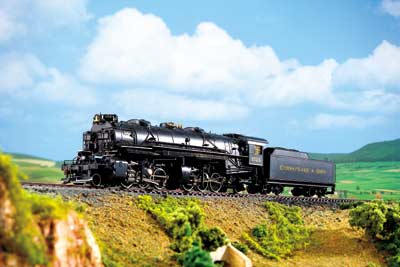
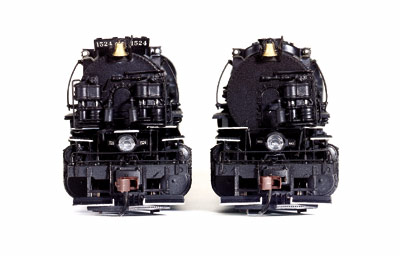
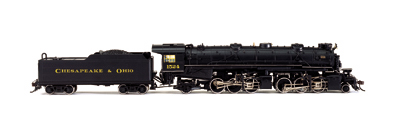
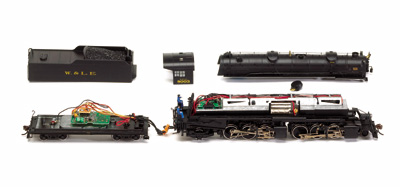
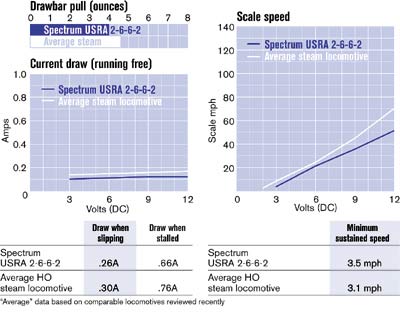


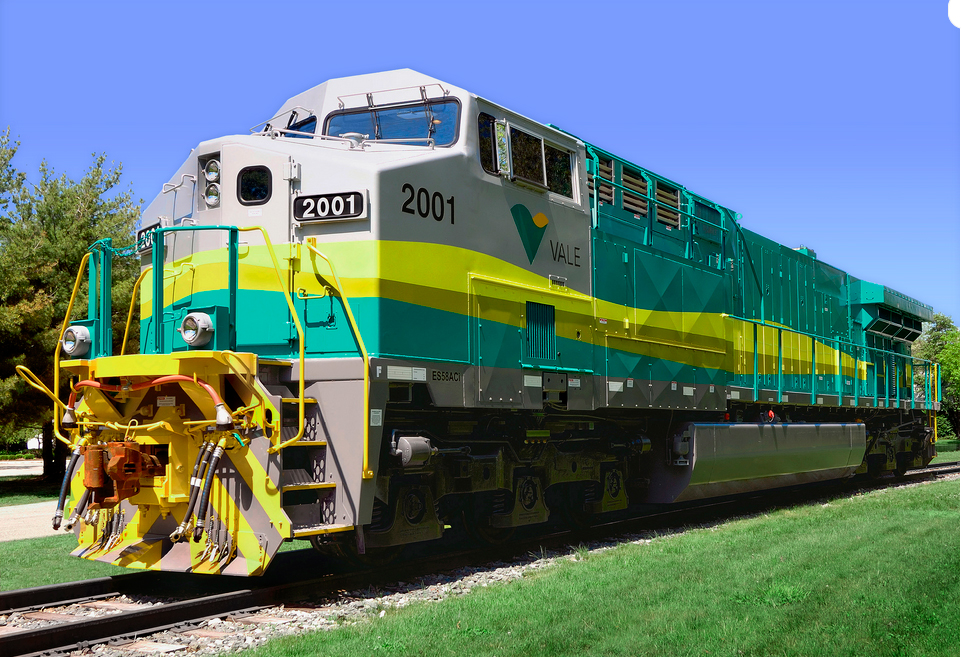
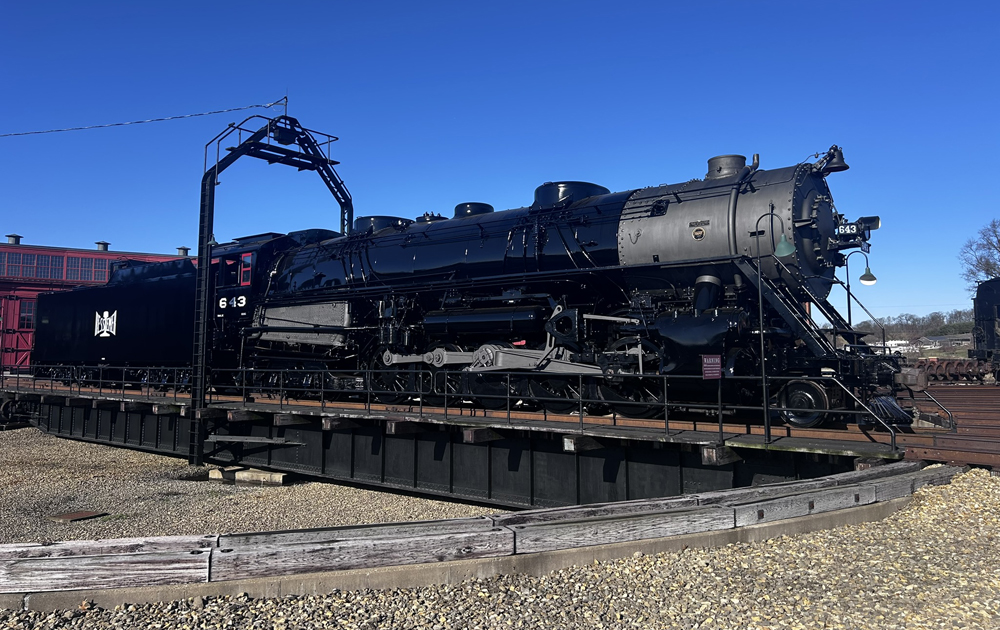





I bought my Loco W/DCC&Sound. It looks, runs, and sounds great. I am now looking at the New C&O 2-6-6-2 which costs about $100. more than I paid for this one.
Is it possible to buy this engine without sound? On Bachmanntrains.com, there is only the sound equipped version.
Got an undecorated ald lettered for my RR
Run great and looks great
I use 24 inch radius
I purchaced the 2662 a month ago and my first run forward the lead drivers jumped off the track at the first curve, after rerailing the drivers it jumped the track at the next curve, after rerailing it again I reversed the direction and upon entering the curve the #1 axle on the tender jumped the track, I have tried this several times and the loco does it every time, even going through a #4 turnout the frist driver jups the rail, I use code 100 atlas flex track with a 24 inch radius, and the problem is not at the rail joiners, after examining the movements closly it seems the 4 wires between the loco and tender are possibly creating lateral force pushing the tender off the track in reverse, the link bar between the loco and tender moves freely, I contacted Bachman through their web site but have not heard from them to date.
I don't know if it's the fly-wheel, but it is very
difficult to spot the couplers over Kadee uncouplers.
The loco over or under shoots by several inches.
This model is well detailed and looks great on a drag. I have not been able to get a second one at the low price that I paid for the first one. They seem to have evaporated.
I've had my undec 2-6-6-2 for over a year now and it's one of my best non-brass engines. It ran smooth as silk right out of the box and has never had any derailing problems. I installed a Tsunami sound decoder and that made it 10 times better to operate and watch.
I use it on a mine branch with code 83 Walthers track, #4 & 5 turnouts and 24"r. She usually hauls 15 cars and I don't know what the limit would be.
Highly recommend this beautiful steamer!
Roger Huber
It will run on my European Layout. May be I will buy him during my next stay in Georgia
I bought 3 of these. They are very nicely done. They are very smooth and quiet and run as well as brass. Superdetailing is easy for those who like to do so. I bought a Bachmann 12 wheel Vanderbilt tender which looks very good behind one. Some of the prototypes had 12 wheel tenders, although most had 4 axle Vanderbilts.
I would recommend it highly. It is NOT worth $50 more for "weathering". You can do a better job yourself than Bachmann did with an air brush or your weapon of choice.
One of my 3 had to be exchanged because it ran with a glitch in the mechanism; now all 3 run very well right out of the box.
Way to go, Bachmann.
Great free runner out of the box. Started to move at 1.25 volts o.1 amps on D.C. Should be a real good loco on DCC. Information lacking on how to get it apart in diagrams.